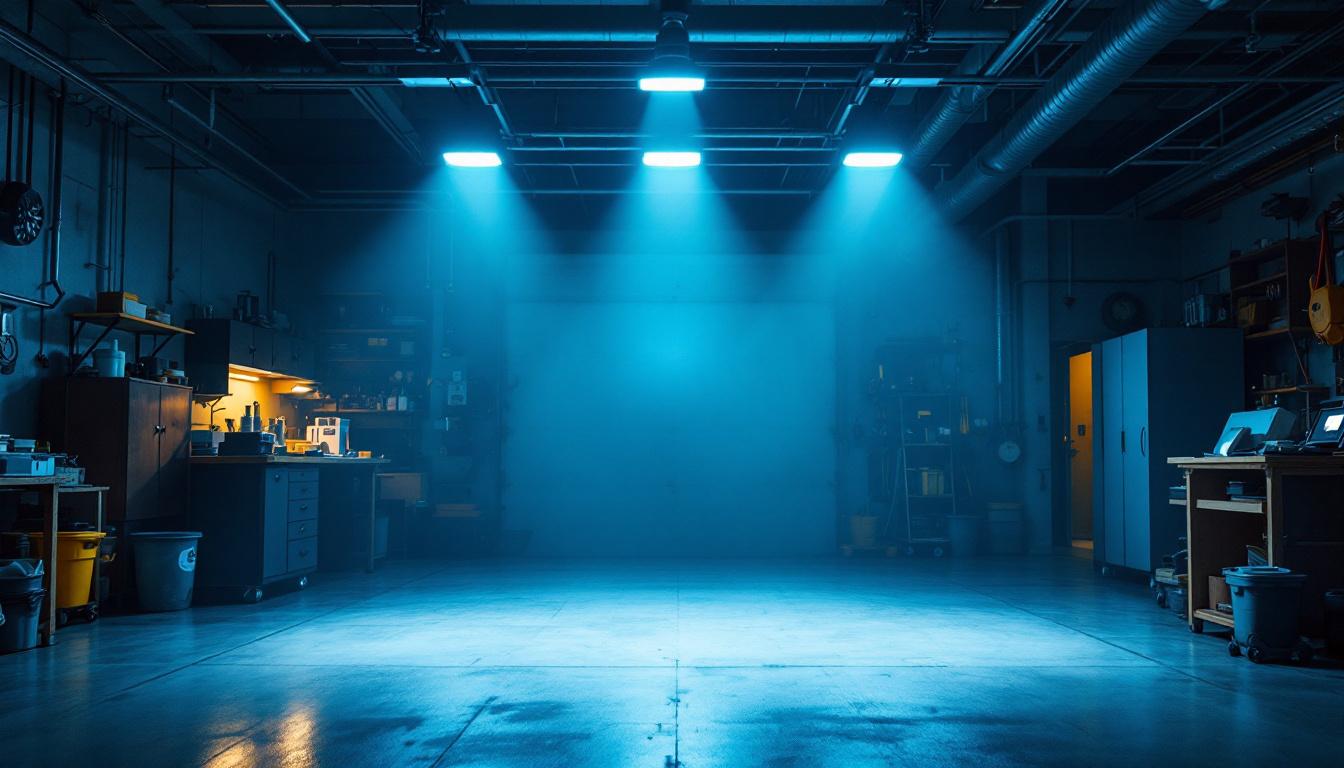
Fluorescent light bulbs flickering is a common issue that lighting contractors encounter on job sites. It’s not just an annoyance; flickering can indicate underlying electrical problems or component failures that may affect the longevity of the fixture and the safety of the installation. Recognizing the root causes of flicker is essential for diagnosing problems quickly and providing reliable solutions to clients.
Unlike incandescent bulbs, fluorescent lamps rely on a complex interplay of electrical components to generate light. This complexity means multiple factors can cause flickering, from simple socket issues to ballast malfunctions. For contractors, understanding these variables is key to efficient troubleshooting and ensuring customer satisfaction.
One of the most frequent culprits behind flickering is a failing ballast, which regulates the current to the fluorescent lamp. When a ballast begins to fail, it can cause the lamp to flicker intermittently, leading to a frustrating experience for users. Additionally, older magnetic ballasts are more prone to this issue than newer electronic ballasts, which offer improved performance and energy efficiency. Contractors should also be aware that environmental factors, such as temperature fluctuations, can exacerbate flickering in fluorescent fixtures, particularly in unconditioned spaces like garages or warehouses.
Another aspect to consider is the quality of the fluorescent tubes themselves. Low-quality or incompatible tubes can lead to flickering, as they may not work well with the ballast or may have manufacturing defects. It’s advisable for contractors to recommend reputable brands and ensure that the tubes are compatible with the existing fixtures. Furthermore, the installation process plays a crucial role; improper installation can lead to loose connections that cause flickering. Regular maintenance checks can help catch these issues early, ensuring that clients enjoy a consistent and reliable lighting experience.
The ballast regulates the current to the fluorescent lamp, ensuring it receives the correct voltage to operate. If a ballast begins to fail, the lamp may flicker or fail to start properly. Electronic ballasts have largely replaced magnetic ones due to their efficiency and quieter operation, but both types can cause flickering when defective.
Signs of ballast failure include intermittent flickering, humming noises, or a delay in the lamp reaching full brightness. For contractors, testing the ballast with a multimeter or swapping it with a known good unit can quickly confirm if it’s the culprit. Additionally, it’s worth noting that older fluorescent fixtures may still be using magnetic ballasts, which are not only less efficient but also more prone to failure. Upgrading to modern electronic ballasts can significantly enhance performance and reduce maintenance costs in the long run.
One of the simplest yet most overlooked causes of flickering is a loose connection. Whether it’s a loose wire in the fixture, a poorly seated bulb, or a faulty socket, inconsistent electrical contact can cause the lamp to flicker.
During installations or maintenance, always check that bulbs are securely seated and that wiring connections are tight. Using wire nuts or terminal blocks correctly and ensuring no corrosion or damage to sockets can prevent flickering caused by intermittent power delivery. Furthermore, it’s essential to consider the overall wiring condition in older buildings, where age and wear can lead to degraded connections. Regular inspections can help identify potential issues before they escalate into more significant problems, ensuring a consistent lighting experience.
Not all fluorescent bulbs are created equal. Using bulbs that aren’t compatible with the fixture’s ballast or opting for low-quality replacements can lead to flickering. For example, some bulbs require specific ballast types or wattages, and mismatches can cause unstable operation.
Lighting contractors should verify bulb specifications against fixture requirements and educate clients on the importance of quality components. This prevents unnecessary callbacks and enhances the overall lighting system reliability. Additionally, it’s advisable to keep abreast of advancements in lighting technology, as newer bulb designs may offer improved performance and energy efficiency. Encouraging clients to invest in higher-quality bulbs can lead to longer-lasting installations and reduced energy costs, which is a win-win for both parties.
Fluorescent lamps are sensitive to voltage changes. Fluctuations in the building’s electrical supply, whether due to overloaded circuits, faulty breakers, or external grid issues, can cause noticeable flickering.
Contractors should use voltage testers or data loggers to monitor supply stability, especially in commercial settings where multiple high-demand devices may cause dips or surges. Recommending dedicated circuits or voltage stabilizers can mitigate these problems. It’s also beneficial to educate clients about the impact of their electrical usage patterns, as peak demand times can exacerbate flickering issues. By understanding their power consumption, clients can better manage their electrical load and maintain consistent lighting conditions.
Temperature plays a significant role in fluorescent lamp operation. Cold environments can cause lamps to flicker or fail to start because the mercury vapor inside the tube doesn’t reach the optimal temperature for stable light output.
In refrigerated spaces or outdoor installations, using cold-start or rapid-start lamps designed for low temperatures can prevent flickering. Contractors should assess the installation environment carefully before selecting bulbs. Additionally, humidity levels can also affect lamp performance; excessive moisture can lead to corrosion and electrical issues. Implementing proper sealing and protective measures can help maintain the integrity of fixtures in challenging environments, ensuring that the lighting remains reliable and effective.
When called to address flickering fluorescent lights, a methodical approach saves time and ensures no detail is overlooked. Start by visually inspecting the fixture for obvious issues: damaged bulbs, loose wiring, or signs of ballast overheating. It’s essential to check the connections at both ends of the fixture, as loose terminals can often lead to inconsistent power delivery, resulting in flickering. Additionally, inspecting the surrounding environment for dust accumulation or moisture can provide clues, as these factors can adversely affect electrical components.
Next, test the ballast and wiring with appropriate tools. A multimeter can check for continuity and voltage levels, while a ballast tester can confirm if the ballast is functioning within specifications. Swapping bulbs with known good ones can isolate the problem to the lamp or the fixture. If flickering persists after replacing the bulb and testing the ballast, it may be beneficial to examine the circuit itself for issues such as overloaded circuits or incompatible dimmer switches, which can introduce flicker into the lighting system.
For complex or intermittent flickering, data loggers and power quality analyzers provide valuable insights. These tools record voltage and current fluctuations over time, helping contractors identify patterns or external factors affecting the lighting system. By analyzing this data, contractors can determine whether the flickering is related to specific times of day, load changes, or even interactions with other electrical equipment in the vicinity, such as HVAC systems or machinery that may cause voltage dips.
Such diagnostics are particularly useful in commercial or industrial settings where multiple systems interact, and pinpointing the cause of flicker requires detailed electrical analysis. In these environments, it’s not uncommon for contractors to encounter issues stemming from harmonics or power factor problems. Utilizing advanced tools allows for a comprehensive assessment, enabling contractors to recommend solutions that may include upgrading transformers, installing power factor correction devices, or implementing dedicated circuits for sensitive lighting systems. This thorough approach not only resolves flickering but also enhances the overall efficiency and longevity of the lighting installation.
Selecting compatible, high-quality ballasts and bulbs is the foundation of a flicker-free fluorescent lighting system. Contractors should source products from reputable manufacturers and verify compatibility with existing fixtures and electrical systems.
Additionally, specifying electronic ballasts over magnetic ones can reduce flicker and improve energy efficiency. Electronic ballasts operate at higher frequencies, which minimizes the visible flicker effect and extends lamp life.
Ensuring secure wiring connections and correctly seating bulbs are critical steps during installation. Use appropriate tools and follow manufacturer guidelines for torque and wiring methods. Avoid over-tightening sockets, which can damage bulbs, and ensure that all wiring is neatly organized to prevent accidental loosening over time.
Regular maintenance helps catch potential flicker causes before they become serious problems. Schedule periodic inspections to check ballasts, bulbs, and wiring. Replace aging components proactively, especially in high-use or critical lighting areas.
Documenting maintenance activities and component replacements also aids in tracking fixture performance and identifying recurring issues.
Clients often perceive flickering lights as a sign of poor workmanship or faulty products. Clear communication about the causes of flicker and the steps taken to resolve it builds trust and demonstrates professionalism.
Educate clients on the importance of using compatible bulbs and the impact of environmental factors. Offering maintenance plans or follow-up inspections can also reassure clients that their lighting system will remain reliable.
Flickering fluorescent lights are more than just a nuisance; they can signal electrical issues that affect safety and fixture longevity. For lighting contractors, mastering the causes and solutions of flicker is essential. From diagnosing faulty ballasts and loose connections to selecting the right components and performing thorough maintenance, each step contributes to delivering dependable lighting installations.
By applying these insights and best practices, contractors can reduce callbacks, enhance client satisfaction, and uphold the quality standards expected in the lighting industry.
Ready to tackle flickering fluorescent lights with confidence? Equip yourself with the best tools for the job at LumenWholesale. Our extensive range of high-quality, spec-grade lighting products ensures you have access to the components you need to deliver flicker-free lighting solutions. Say goodbye to inflated markups and hello to unbeatable wholesale prices, free shipping, and the convenience of bulk buying. Don’t let flickering lights dim your reputation—shine bright with reliability and performance from LumenWholesale Lighting at the Best Value.

Discover how outdoor lamp post light bulbs can significantly influence energy efficiency.

Discover the essential insights into super bright LED shop lights with our comprehensive guide tailored for lighting contractors.

Discover innovative cost-saving strategies for lighting contractors with indoor motion sensor lights.

Discover essential tips and common pitfalls in pole barn lighting with our comprehensive guide for lighting contractors.